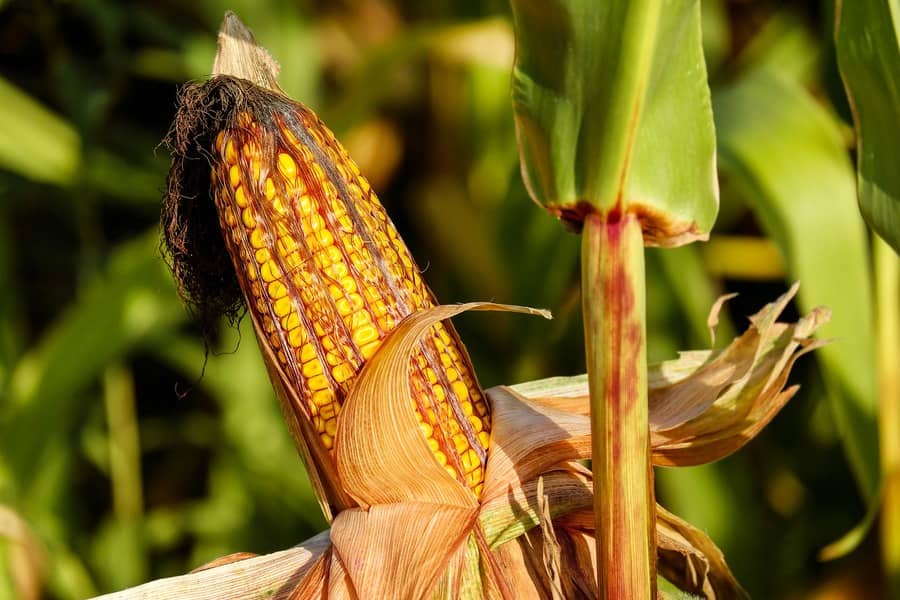Porto Alegre, August 23, 2022 – The international market of corn still tense with US crop. Even though the US corn harvest starts in September, the market seems to resist pricing the seasonality of the increase in supply and a natural curve of moderation in prices. This week, the Pro Farmer traditional crop tour will renew some expectations about the crop, even if this information does not necessarily coincide with the USDA data. At the same time, the European picture of losses is clear, and this is just a confirmation of production volumes. The information that is trying to be imposed at this moment concerns the Chinese crop, which is doing very well in large producing regions of the southeast and northeast of the country, but suggests problems in regions with lower production in the south and center.
The European corn crop maintains the configuration of production losses. USDA projected a loss of 68 to 60 million tons, but local analysts project 55 to 60 million tons, which suggests new potential cuts in production in the next updates. On the other hand, Russia is drawing a record wheat crop, and Ukraine, despite the continuation of the war, is continuing with shipments of 3 to 4 vessels a day at the ports of the export corridor. Products such as low-standard corn and wheat are being donated to Africa. The other portion of corn must keep being bought from Argentina, Brazil, and the United States until September 2023.
If Europe has almost consolidated data, having already made large imports since June from South America and sustained high premiums in Brazil, the United States is in the definition phase. The harvest must start after September 10 in some locations in the western Midwest, clearly the region hit by the 2022 drought and which will now receive good rainfall at the close of August, which is quite beneficial for soybean crops but already with little effect on corn. We are talking about Nebraska, Kansas, and Missouri, states with the lowest share of the total US production.
But there are still doubts about Iowa. The largest corn- and soybean-producing state received rains in August and is in an undefined situation on the west side. In 2021, the state also suffered an even more severe drought than the current one, however, average temperatures were not so high. So, this doubt about production in the largest producer persists, and these data can affect the national average of productivity. In other regions, the crop is going very well, including signs of record productivity in Illinois.
This week, the traditional crop tour of the Pro Farmer group will take place, which is not aimed to contrast with the USDA information, but to bring a private view of the regional crop situation. These are references that can contribute to some price volatility on the CBOT over the week depending on the bias obtained from the field. It seems that the crop tour tends to confirm the most critical situation in the west, but also the very favorable situation in the mid-east. The key will be Iowa.
With this scenario, CBOT prices set a pre-harvest level, that is, between USD 6.00/6.40 a bushel for the September and December maturities. A positive symptom from the crop tour regarding the US crop could push prices back below USD 6.00 for the start of the harvest in September. A bad result in Iowa could make the market test the level of USD 6.40 even before the harvest. With the harvest, the sales decisions of US producers will put greater or lower pressure on this 2022 season.
Another piece of information last week, which appeared in the global agricultural media as a catastrophic factor, is the Chinese climate situation. Information sources point to potential strong production losses in China, in both corn and soybeans, due to drought and heat wave. In fact, a portion of China is in a problematic situation, and this region is concentrated in the south and part of the Chinese center. This is not a major production region of the country.
The large producing region is located further up, in the southeast and northeast, and has received excellent rainfall for the last thirty days, providing excellent conditions for production so far. Could the smaller effect of the south be offset by a good crop from the northeast? The data adjustment will be made in the coming few months, since the harvest will take place in late October and November. It is not yet possible to estimate that the situation in China is highly likely to generate a supply deficit environment for 22/23 and a recovery in Chinese imports, currently forecast at 18 million tons.
The set of information begins to leave the 22/23 season with some symptoms that the international market will continue to provide opportunities for a good international trade flow, including exports by South America, but more concentrated in the first half of 2023.
Follow the Safras Agency on our website. Also follow us on our Instagram, Twitter and SAFRAS TV and stay on top of the main agribusiness news!
Copyright 2022 – SAFRAS Latam

